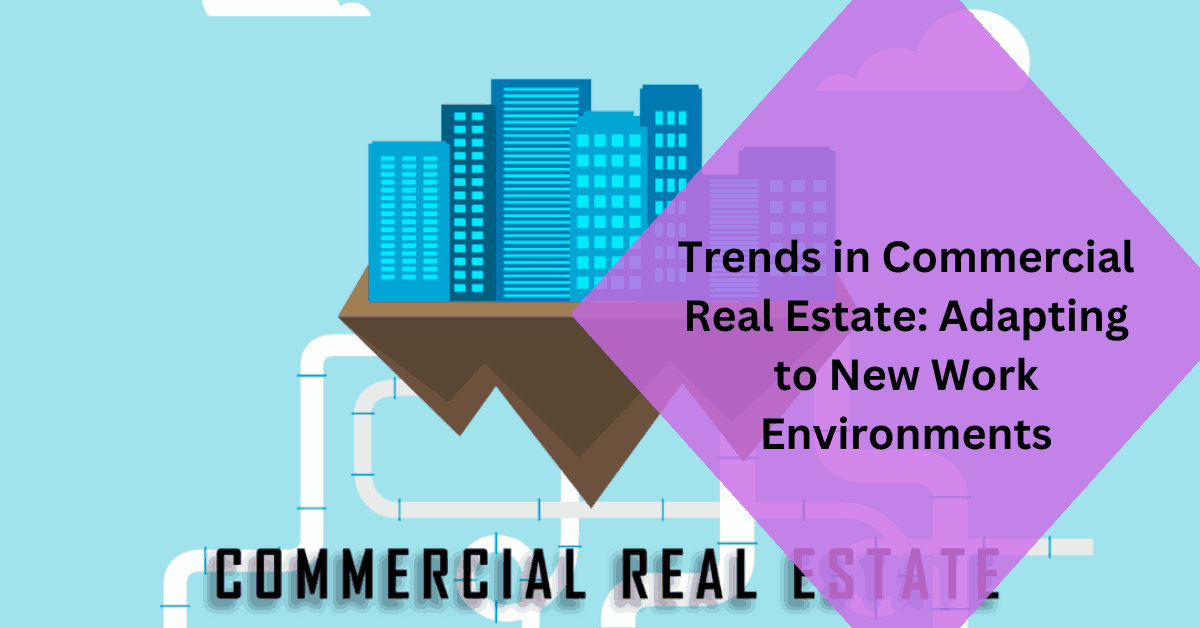Trends in Commercial Real Estate: Adapting to New Work Environments
The landscape of commercial real estate is undergoing a profound transformation as a result of shifting work dynamics and evolving business practices.
The traditional office model is being redefined, prompting property owners, developers, and businesses to adapt to new trends that reflect the changing needs of the workforce.
Here are key trends in commercial real estate as it adapts to the demands of new work environments:
Table of Contents
1. Rise of Flexible Workspaces:
Flexible workspaces, including co-working and shared office spaces, are gaining prominence. The flexibility they offer appeals to businesses of all sizes, allowing them to scale up or down based on their needs. This trend is reshaping the demand for traditional office leases and fostering dynamic, collaborative work environments.
2. Hybrid Work Models:
The adoption of hybrid work models, combining remote work and in-office collaboration, is influencing office space requirements. Companies are reevaluating their real estate needs to accommodate a workforce that splits its time between home and the office. This shift is impacting the size, layout, and design of commercial spaces.
3. Technology Integration:
The integration of technology is a crucial trend in modern commercial real estate. Smart building technologies, touchless entry systems, and advanced connectivity are becoming standard features. These technologies enhance the overall tenant experience, improve efficiency, and support the evolving needs of tech-savvy businesses. The widespread adoption of QR code systems for seamless access and information retrieval is playing a key role in streamlining various processes within these tech-forward environments.
4. Emphasis on Health and Wellness:
The COVID-19 pandemic has heightened the focus on health and wellness in commercial real estate. Property owners and developers are incorporating design elements that prioritize air quality, sanitation, and overall well-being. This includes advanced HVAC systems, touch-free amenities, and wellness-focused spaces within commercial properties.
5. Adaptive Reuse of Spaces:
The adaptive reuse of existing spaces is a sustainable trend gaining traction. Property developers are repurposing old warehouses, industrial buildings, and retail spaces to create innovative, mixed-use environments. This approach aligns with the demand for unique, character-rich spaces that support a variety of functions.
6. Focus on Sustainability:
Sustainability is a key consideration in commercial real estate. Green building certifications, energy-efficient designs, and eco-friendly features are increasingly sought after. Sustainable practices not only reduce the environmental impact but also align with the preferences of tenants and investors who prioritize responsible business practices.
7. Shift in Location Preferences:
The importance of location is evolving. While proximity to central business districts remains important, there is a growing interest in suburban and satellite office locations. Businesses are exploring decentralized office spaces to accommodate employees who prefer to work closer to home, reducing commute times and increasing overall flexibility.
8. Coworking Expansion Beyond Urban Centers:
The coworking trend is expanding beyond major urban centers. Suburban and secondary markets are witnessing the growth of coworking spaces, catering to a distributed workforce. This decentralized approach allows businesses to provide convenient workspaces for employees living in various locations.
9. Agile Office Design:
Traditional office layouts are giving way to more agile and versatile designs. Spaces that can be easily reconfigured to accommodate various work styles, collaboration needs, and social distancing requirements are becoming the norm. Agile design fosters adaptability in the face of changing workplace dynamics.
10. Tenant Experience and Amenities:
Commercial property owners are placing a greater emphasis on enhancing the tenant experience. Premium amenities, including fitness centers, communal spaces, and on-site services, contribute to attracting and retaining tenants. This focus on experience extends beyond the office space itself to the surrounding environment.
11. Focus on Resilience and Flexibility:
The importance of resilience and flexibility in commercial real estate has become evident, particularly in the face of unexpected disruptions. Property owners are prioritizing resilient designs, lease flexibility, and contingency planning to navigate uncertainties and ensure business continuity for tenants.
Conclusion:
The trends in commercial real estate reflect a dynamic and adaptive response to the changing nature of work. As businesses embrace flexible work arrangements, prioritize technology integration, and focus on the well-being of their workforce, commercial real estate will continue to evolve to meet these evolving demands. The industry’s ability to navigate these trends will play a crucial role in shaping the future of work environments and the built landscape.

